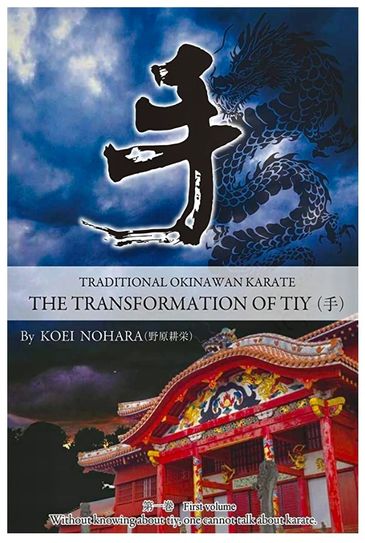Karate and Ryukyukan
.webp/:/cr=t:0%25,l:2.21%25,w:93.15%25,h:100%25/rs=w:365,h:365,cg:true)
Karate
The Ryukyu’s are a string of islands that lie between mainland Japan and China. Okinawa is the largest of the Ryukyu islands. Karate originated in Okinawa, and developed into three major branches by the late 1800’s. Each of the three branches represents a locality in Okinawa, each different in history and form, together forming the base o
The Ryukyu’s are a string of islands that lie between mainland Japan and China. Okinawa is the largest of the Ryukyu islands. Karate originated in Okinawa, and developed into three major branches by the late 1800’s. Each of the three branches represents a locality in Okinawa, each different in history and form, together forming the base of virtually every karate style practiced today. Naha, Okinawa’s largest city, had its own branch called Naha-te (Naha hand). Tomari, a port region near Naha became the location of Tomari-te. Shuri was the seat of the rulers of the Ryukyu kingdom, where the third branch, Shuri-te developed.
Okinawa and the Ryukyu Islands have a long history of feudalism similar to Europe. Power was consolidated into three kingdoms in the 1300’s (Sanzan Period) and then fell under one kingdom in 1429 when King Hashi and his kingdom at Shuri Castle rose to power. This was the beginning to the Sho Dynasty. Functioning as a tributary to China with its ships sailing from the port at Naha, the Sho Dynasty at Shuri Castle was at the centre of a great exchange of culture and trade all over Asia. Shuri’s Sho Dynasty held the martial power to unify the Ryukyus, and maintained an era of trade and peace for hundreds of years. The centre of the Ryukyu martial way of life was Shuri-te, secretly maintained by the Shuri-te masters within Shuri Castle. In 1609, the Satsuma Clan of Japan took control of the Shuri Kingdom, driving Shuri-te deeper into secrecy. Shuri-te was preserved by the Shuri-te masters through private training, kata, and cultural dances. Shuri-te was first released to the public in the late 1800’s by Shuri-te master and school teacher Anko Itosu (1831-1915), who believed that his teachings could empower the youth of Japan.
Itosu Sensei passed Shuri-te to his top students, Chosin Chibana who named his branch Shorinryu (Kobayashi) Karate, and Chotoku Kyan who named his branch Shorinryu (Matsubayashi) karate. Another of Itosu Sensei’s students, Gichin Funakoshi moved to the Japanese mainland and introduced Shuri-te as Shotokan Karate.
.webp/:/cr=t:0%25,l:0%25,w:100%25,h:100%25/rs=w:365,cg:true)
Ryukyukan
Our Ryukyukan Karatedo Federation is committed to the preservation of the original Shuri-te/Shorinryu Karate as taught by Sensei Itosu in the 1800’s. Our president, Hanshi Koei Nohara of Okinawa, has spent his entire life studying (Kobayashi) Shorinryu as taught by Sensei Chosin Chibana, and (Matsubayshi) Shorinryu as taught by his father
Our Ryukyukan Karatedo Federation is committed to the preservation of the original Shuri-te/Shorinryu Karate as taught by Sensei Itosu in the 1800’s. Our president, Hanshi Koei Nohara of Okinawa, has spent his entire life studying (Kobayashi) Shorinryu as taught by Sensei Chosin Chibana, and (Matsubayshi) Shorinryu as taught by his father Kaoru Nohara, a direct student of Chotoku Kyan.
Ryukyukan (or Ryukyu Organisation) has a direct historical link to the original Shuri te, and preserves this lineage through Kata (Karate forms). If you look closely at the Shuri Palace photo, you will see the Shi-Sa (half dragon-half lion) on the palace roof. The Shi-Sa, protector of Okinawa, can be found on the Ryukyukan patch.

Nohara Koei Hanshi 10th Dan
Nohara Koei Hanshi 10th Dan
Nohara Koei Hanshi 10th Dan
President of Okinawa Karatedo Shorinryu Ryukyukan and the All Ryukyu's Full Contact Karatedo Federation
Hanshi Nohara is ranked as a Karatedo 10th dan, and holds a Master’s degree in Cultural Anthropology, specializing in Ryukyuan culture. Hanshi Nohara retired from government service in 2008, having served as an administrator for the Oki
President of Okinawa Karatedo Shorinryu Ryukyukan and the All Ryukyu's Full Contact Karatedo Federation
Hanshi Nohara is ranked as a Karatedo 10th dan, and holds a Master’s degree in Cultural Anthropology, specializing in Ryukyuan culture. Hanshi Nohara retired from government service in 2008, having served as an administrator for the Okinawa Prefecture. Also in 2008, Hanshi Nohara released his book: “The transformation of Tiy of Okinawa Traditional Karate”. This book chronicles Okinawa-te and its development into modern karate. Hanshi Nohara’s book has been well read in Japan, and has now been translated in English. Hanshi Nohara also looks to the cultural dances of Okinawa, analyzing and studying the Shuri-te methods woven within these dances.
Hanshi Nohara personally instructs and guides his dojo branch owners to ensure the preservation of Shorinryu karate as a living, vibrant and extremely viable fighting method, a powerful method of self development, and a true cultural treasure of the Ryukyu’s.
